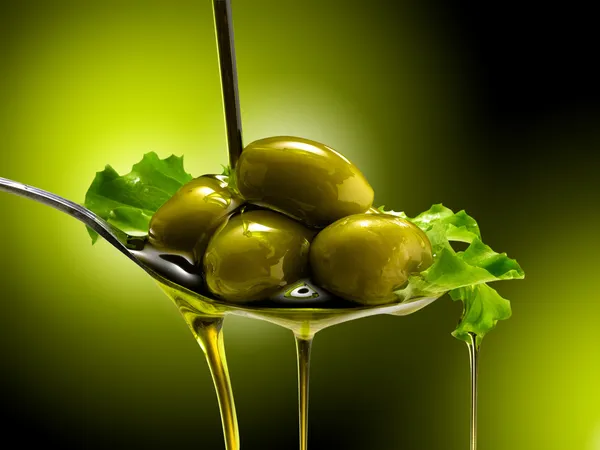Shopping Bag
No products in the cart.

According to commodity pricing data from the International Monetary Fund, global olive oil export prices reached a record high at the end of April.
The IMF’s benchmark extra virgin olive oil. The export price reached $6,269.63 at the end of April 2023, eclipsing the previous record price of $6,241.91 in December 1996.
Export prices are largely determined by origin prices, specifically in Spain, the world’s largest olive oil producing country.
Poor weather and prolonged drought conditions continue to push Spanish olive oil prices to their original 26-year highs. Experts predict that record prices will continue for the foreseeable future.
According to Reuters, the dry weather has resulted in 36 months of low rainfall. The hot conditions have put Spain’s reservoirs at 50% capacity.
Spain’s Ministry of Agriculture, Fisheries and Food said the country produced only 680,000 tonnes in the 2022/23 harvest compared to 1.5 million tonnes the previous one.
Despite recent rains in southern and eastern Spain, forecasts for the 2023/24 crop year remain bleak. With no weather changes, industry experts predict that the future harvest could produce another poor yield.
John Cancilla, an economist who studies olive oil, told the Washington Post that higher prices are slowing demand from American buyers. “Prices are high, but I don’t see any reason why they’re going to come down,” he said.
Along with Spain, which is responsible for nearly half of the world’s olive oil proliferation in any given year, the prolonged drought has led to poor harvests across the Mediterranean basin, leading to high olive oil prices.
According to the International Olive Oil Council, world olive oil production is expected to fall to 2.73 million tonnes in the 2022/23 crop year, more than 12 percent below the five-year average, largely due to drought and high spring temperatures in the Mediterranean basin.
Separate estimates from USDA forecast a rebound in production in the 2023/24 growing season to 3.20 million tons. However, USDA economists warned that production could fall below the estimate depending on how the drought in the Mediterranean develops.
Outside the Mediterranean, California is also struggling with climate change, and like Spain, no relief is in sight.
According to the Washington Post, California farmers are facing extremely wet conditions after a deluge of rain. In late winter and early spring, storms broke out in California, causing severe flooding and devastating rainfall.
“Weather can make or break an entire season’s production,” Samantha Dorsey, president of McEvoy Ranch in Petaluma, told the Washington Post.
The results are still unknown, as wet conditions may affect a later bloom for the California olive crop.
Casey Corn, a culinary consultant and olive researcher, told Food & Wine Magazine that “the changing climate will definitely result in volatility in olive production.”
“With uncertain temperature patterns and weather patterns increasing in intensity, our crops don’t face the same predictable environments that we have created infrastructure and businesses around us,” he added.
The changing climate creates further problems for olive oil proproducers and consumers. The environment is fundamental to the quality and taste of food.
“The taste is protected by certifications such as AOP [Controlled Designation of Origin, in France], PDO [Protected Designation of Origin], DOC [Controlled Designation of Origin, in Italy],” Corn said. “Larger olive growers may need to supplement smaller crops with olives from different locations, which can affect the taste of the product.”
Olive oil growers are looking for solutions, according to Jennifer LeClair, vice president of purchasing and operations at Pastene, a U.S.-based specialty food importer. “Growers will need stronger investments in irrigation technology when the weather doesn’t cooperate and is better for olive growth,” LeClair told Food & Wine Magazine.
Rivulis is an irrigation technology company that is transforming the way farmers water crops. The innovative drip irrigation system enables farmers to expand crops such as olives, walnuts, almonds, tomatoes and corn.
In a Rivulus video interview, Luis Javier Fernández Villalobos, a technician at Agrofervi Explotaciones Agrícolas, describes drip irrigation as the key to good crop quality in his Spanish olive grove.
Successful drip irrigation requires uniformity, which is critical to the quality, taste and appearance of the crop.
“We grow rain-fed and irrigated crops, but mostly irrigated intensive [high-density] crops,” Villalobos said. “Drip irrigation completely changes the crops we can grow. It guarantees that we produce crops of exceptional quality.”
While consumers continue to enjoy the benefits of olive oil, rising prices and declining volumes can inspire new culinary explorations.
“I hope farmers will continue to innovate as the climate is constantly changing,” Corn Olive Oil Times said. “As with many other commodities, prices will have to rise as production costs do as well. While consumers are used to a range of prices on olive oils and the ability to prioritize value over quality, that will likely change.”
“I believe that olive oil has become indispensable in American kitchens and that consumers will continue to buy olive oil,” he added. “We may find that people are starting to expand the variety of oils used in their kitchens and are starting to use different oils for different cooking techniques, but that they still buy olive oil as a familiar and delicious product.”
How valid and what should we believe about cooking with olive oil? Yannis Karvelas gives answers and
The beneficial effects of a Mediterranean diet on human health and, in particular, on lowering risk
No kitchen is without extra virgin olive oil and this is no coincidence, since it is the main ingred

